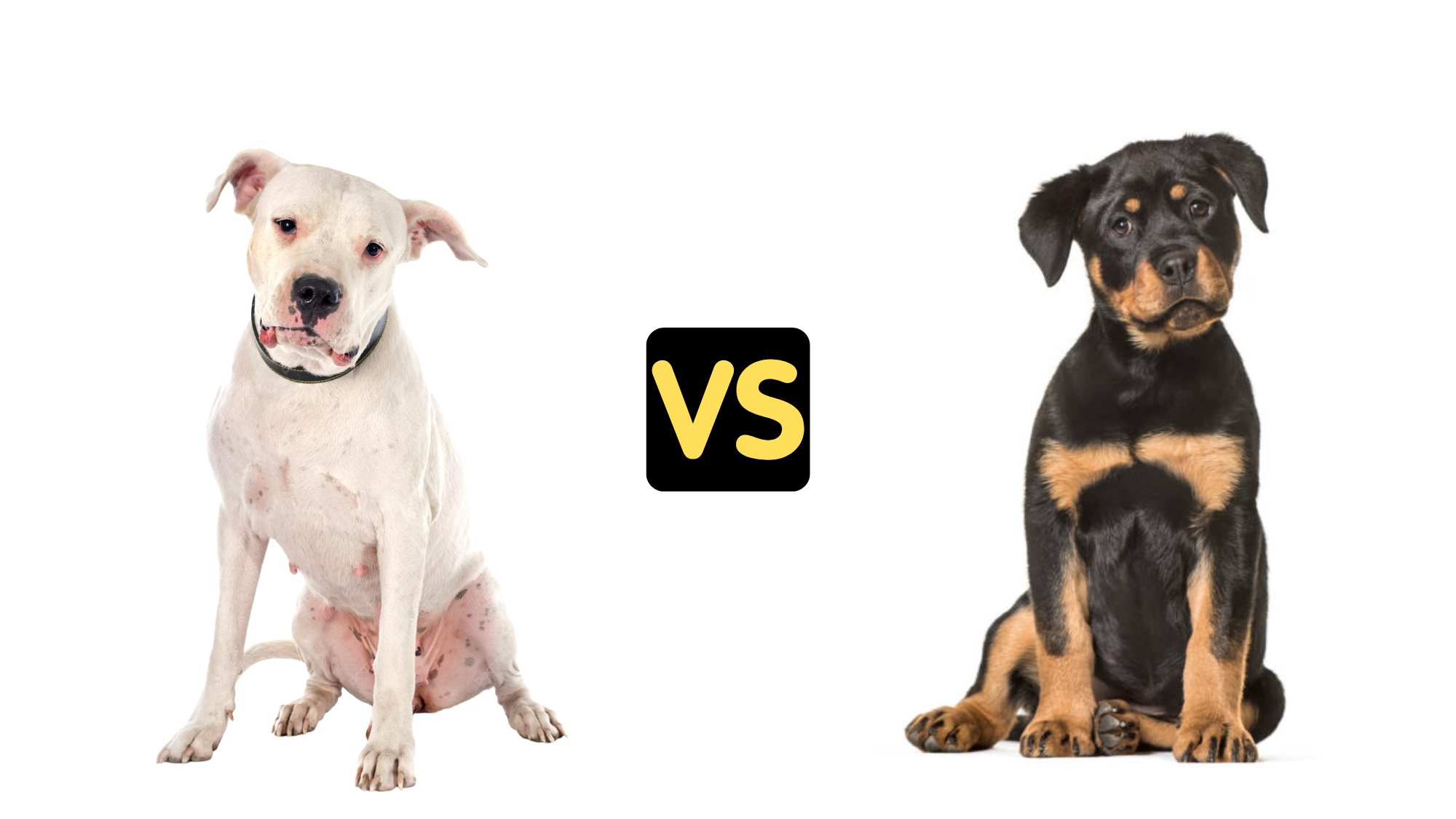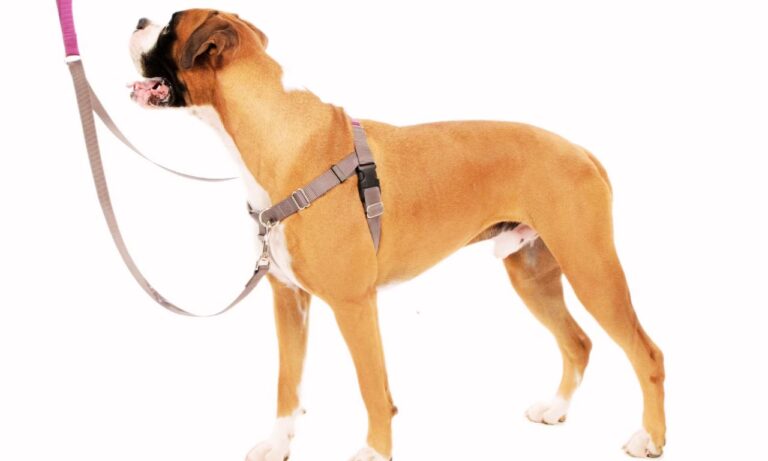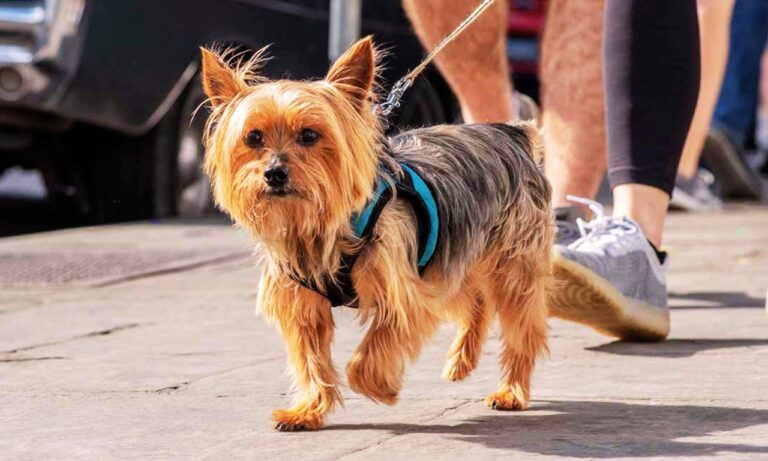The Argentine Dogo vs Rottweiler are two of the most formidable, loyal, and head-turning breeds in the canine world. Both possess immense power, protective instincts, and a deeply loyal nature — but their personalities, origins, and working abilities set them apart in meaningful ways.
I will offer a complete breakdown of Argentine Dogo vs Rottweiler: from their size and muscle mass to behavioral traits, training needs, and lifestyle compatibility. Whether you’re an experienced handler or a prospective dog owner weighing your options, this deep dive helps you determine which of these powerhouse breeds fits your needs best. Learn more about the unique double-layered coat of an Anatolian Shepherd and how to care for it effectively.
Blog Highlights
ToggleArgentine Dogo vs Rottweiler Origins and Breed Purpose
Argentine Dogo: Bred in the 1920s by Dr. Antonio Nores Martínez in Argentina, the Dogo Argentino was designed for big-game hunting. The goal was to create a dog that combined the strength of the Cordoba Fighting Dog with the stamina and intelligence of breeds like the Pointer and Great Dane. The result is a muscular, fearless hunter with a calm demeanor around family.
Rottweiler: Originating from the Roman Empire and later refined in Germany, the Rottweiler’s history traces back to cattle-driving and guarding. As one of the oldest herding breeds, Rottweilers were prized for their strength, intelligence, and guarding instincts. Today, they excel in police work, personal protection, and therapy roles.
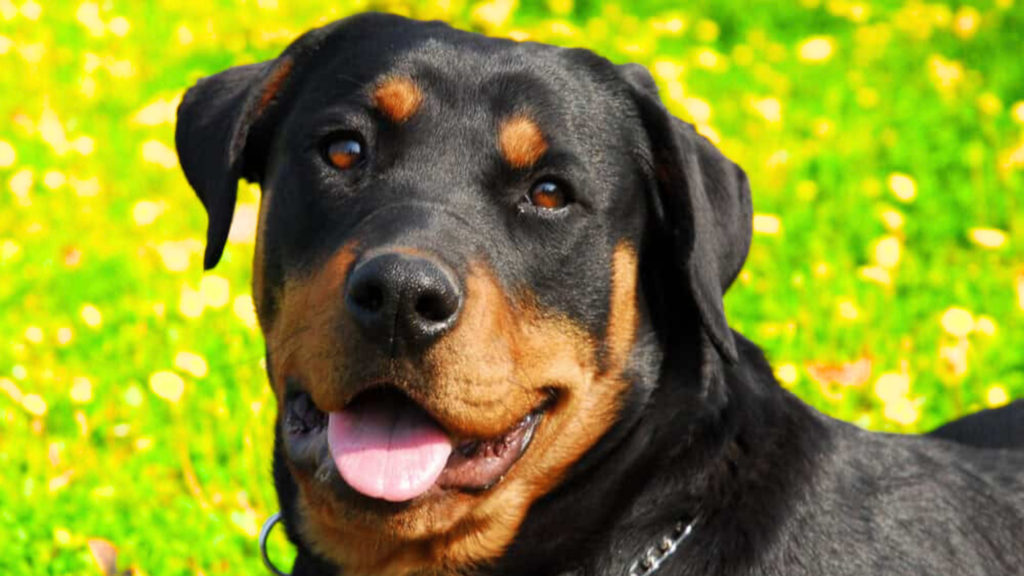
Both breeds were designed to be courageous, physically resilient, and loyal — but while the Dogo was built for silent pursuit and takedown of wild prey, the Rottweiler evolved as a strong, versatile protector of livestock and property.
For insights on whether Pomeranians should wear a collar, including considerations for safety and alternatives, check out this informative article.
Argentine Dogo vs Rottweiler Size and Physical Build
In terms of raw size and muscle mass, both breeds command attention, but their physical composition differs.
Argentine Dogo (Male)
- Height: 24–27 inches
- Weight: 80–100 pounds
- Build: Sleek, athletic, tightly muscled with a square body frame

Rottweiler (Male)
- Height: 24–27 inches
- Weight: 95–135 pounds
- Build: Broad, dense, and heavily muscled with a robust chest and thick neck
Conclusion: Rottweilers are heavier and broader, with a more imposing silhouette. The Dogo, while equally tall, is leaner and built more like an athlete than a tank.
Growth Comparison: How Fast Do They Mature?
Both breeds grow rapidly during the first year but mature at different paces.
| Age | Argentine Dogo (Weight) | Rottweiler (Weight) |
| 2 Months | 20–25 lbs | 18–26 lbs |
| 4 Months | 40–50 lbs | 45–55 lbs |
| 6 Months | 55–70 lbs | 65–80 lbs |
| 1 Year | 75–90 lbs | 85–110 lbs |
| Full Grown | 80–100 lbs | 95–135 lbs |
The Rottweiler typically fills out more slowly, gaining both height and muscle until 2 years old or beyond. The Dogo Argentino reaches peak height by 18 months and builds muscle quickly due to its athletic genes.
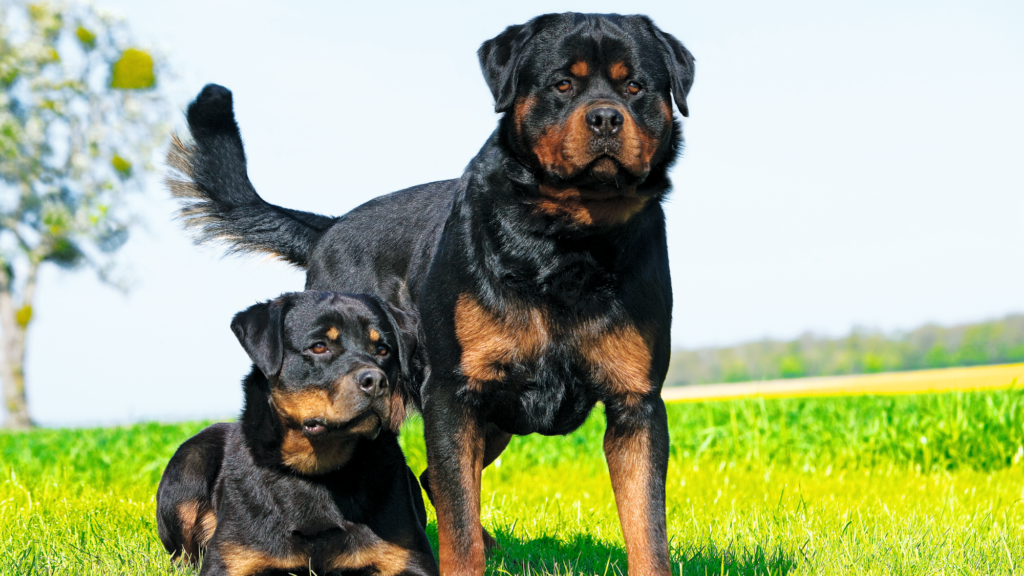
Bite Force and Strength: Who’s More Powerful?
Both breeds have formidable bite strength, but the Rottweiler edges ahead slightly in pressure.
- Argentine Dogo: ~500 PSI (pounds per square inch)
- Rottweiler: ~328–350 PSI
While the Dogo is known for its bone-crushing bite due to hunting heritage, the Rottweiler has a more measured bite often used in restraint and control situations during law enforcement work.
Muscle Density: The Dogo has a leaner muscle composition ideal for agility and speed. The Rottweiler’s heavier build gives it better brute force and impact strength.
Temperament and Behavior: Loyal But Different
Both breeds are extremely loyal and protective, but their personalities show clear distinctions in day-to-day life.
Argentine Dogo
- Calm but intense
- Highly territorial and alert
- Protective of family but wary of strangers
- Usually quiet (barks only when necessary)
- Requires firm, consistent leadership
- Can be dominant toward other dogs, especially of the same sex
Rottweiler
- Confident and watchful
- Intelligent and composed
- Good with children when well-socialized
- Can be aloof with strangers but not aggressive without reason
- Affectionate with family, enjoys downtime
- Generally more tolerant of other pets
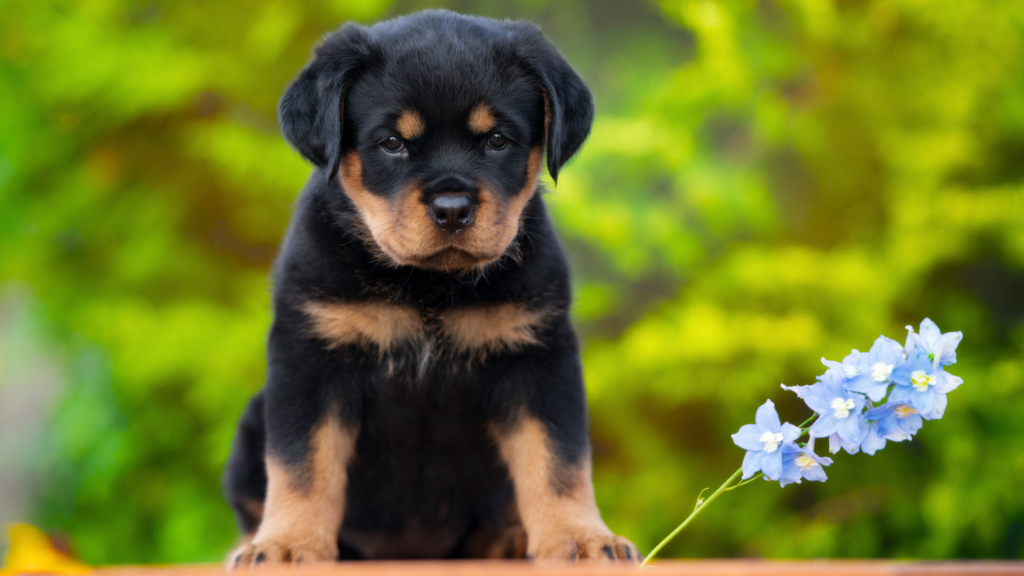
Summary: Dogos are more reactive and intense, often suited to single-owner environments. Rottweilers are more emotionally stable and adapt better to family life if raised properly.
For step-by-step instructions on properly fitting a collar on your Bedlington Terrier, visit this comprehensive guide on how to put collars on Bedlington Terrier.
Training & Intelligence: Who Learns Faster?
Both breeds rank high in intelligence, but how they respond to training differs.
Rottweiler:
- Extremely responsive to structured, reward-based training
- Learns complex commands quickly
- Excels in obedience, tracking, and protection sports
- Very biddable, especially with experienced handlers
Argentine Dogo:
- Highly intelligent but independent-minded
- Responds well to assertive, no-nonsense training
- Can be stubborn without early socialization and leadership
- Requires more repetition for reliable obedience
Conclusion: Rottweilers are easier to train for general obedience and service work. Dogos need an owner with confidence and consistency to bring out their full potential.
Energy Levels and Exercise Needs
Neither breed is a couch potato — but their energy outlets differ.
Argentine Dogo:
- Needs 60–90 minutes of intense physical activity daily
- Thrives on off-leash running, agility, and task-based work
- Easily bored, may become destructive if under-exercised
Rottweiler:
- Moderate to high energy
- Enjoys structured walks, games, and training sessions
- More content with lounging after activity
Dogos need more stimulation, while Rottweilers tolerate a more balanced routine. If you’re active and can dedicate time to rigorous workouts, the Dogo is a match. For those seeking a balance of protection and companionship, the Rottweiler fits better.
Health and Lifespan: Who’s More Resilient?
Both breeds have health concerns, but the Dogo typically has a slightly longer lifespan.
Argentine Dogo Common Issues:
- Deafness (up to 10% of Dogos can be born deaf in one or both ears)
- Hip dysplasia
- Skin allergies
- Thyroid issues
Average Lifespan: 10 to 13 years
Rottweiler Common Issues:
- Hip and elbow dysplasia
- Osteosarcoma (bone cancer)
- Heart problems (subaortic stenosis)
- Obesity if under-exercised
Average Lifespan: 8 to 10 years
Rottweilers are prone to more severe genetic issues, particularly with joints and cancer, due to their larger mass and genetic background. Dogos are generally more robust if bred carefully. The recommended size collar for an English Cocker Spaniel usually ranges from 12 to 18 inches, providing a snug and comfortable fit for your dog.
Family and Home Compatibility
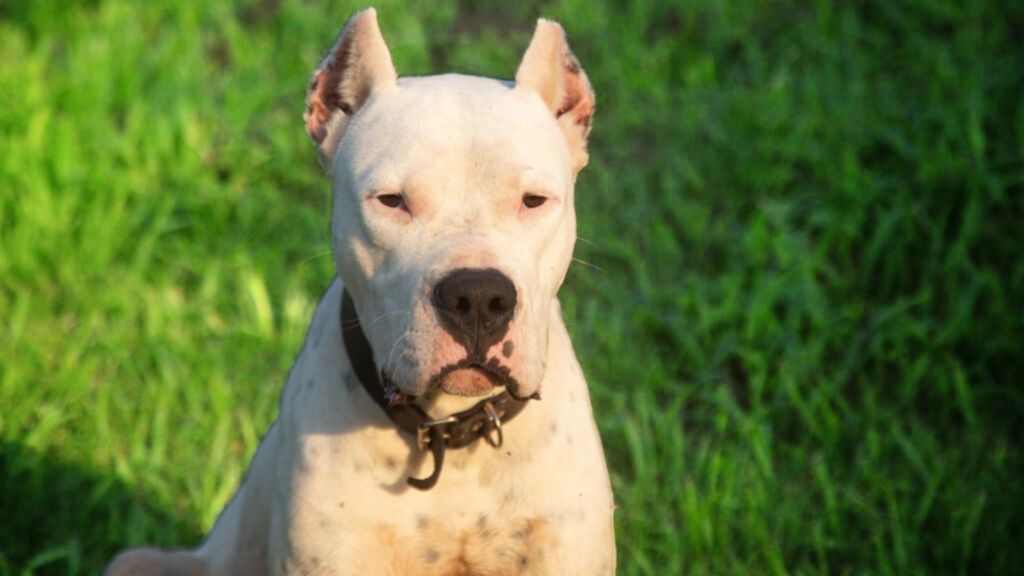
Dogo Argentino:
- Best for experienced owners
- Needs large yard and fenced space
- Not recommended for homes with small pets
- Requires early socialization with children and strangers
- Strong prey drive
Rottweiler:
- Good family dog with early socialization
- Adapts to home life well
- Accepts smaller pets if raised together
- Less likely to chase wildlife or neighborhood animals
- More tolerant of children and guests
In terms of adaptability and family life, Rottweilers win. The Dogo Argentino thrives in a structured, dominant-owner household with outdoor access and limited exposure to chaotic environments.
Protection and Guarding Abilities
If your goal is a personal protection dog, both breeds deliver — just in different styles.
- Argentine Dogo: Fast to react, uses speed and bite strength to neutralize threats. Less likely to bark as a warning. Ideal for single-handler protection.
- Rottweiler: Offers warning signals (growls, stance) before acting. Extremely loyal, stable, and confident. Can restrain intruders without overreacting.
Summary: For silent, stealth-based guarding, the Dogo excels. For balanced family protection with clear communication, the Rottweiler is more controlled and predictable.
Legal Considerations and BSL
In some countries, both the Dogo and Rottweiler are subject to breed-specific legislation (BSL).
- Argentine Dogo is banned or restricted in the UK, Australia, and parts of New Zealand.
- Rottweilers face restrictions in certain housing developments and states, but are not globally banned.
Always check your local laws before choosing either breed.
Final Comparison Table
| Trait | Argentine Dogo | Rottweiler |
| Height | 24–27 in | 24–27 in |
| Weight | 80–100 lbs | 95–135 lbs |
| Bite Force | ~500 PSI | ~328–350 PSI |
| Lifespan | 10–13 years | 8–10 years |
| Energy Level | High | Moderate to high |
| Trainability | Moderate | High |
| Family Suitability | Low to moderate | High |
| Aggression Potential | High if not socialized | Moderate |
| Adaptability | Low (needs space) | High (adapts to home life) |
| Health Risks | Moderate | High |
Conclusion: Which Breed Is Right for You?
Argentine Dogo vs Rottweiler: Choose the Argentine Dogo if you are an experienced handler with time, space, and discipline to raise a dominant, high-energy protection dog. This breed rewards confident leadership with unflinching loyalty, fearless protection, and athletic excellence.
Choose the Rottweiler if you want a loyal, balanced, and versatile companion who can protect your family and still relax at your feet. They offer more emotional stability, family friendliness, and easier trainability — all while still delivering strength and confidence in their protective instincts.
Both breeds are extraordinary, but the right choice depends entirely on your lifestyle, experience, and long-term goals. Get to know their needs, commit to training, and you’ll earn the love and respect of a true canine partner — whether it’s the Dogo or the Rottie. To find the perfect fit, learn more about what size collar for a Bichon, ensuring your dog’s comfort and safety.

